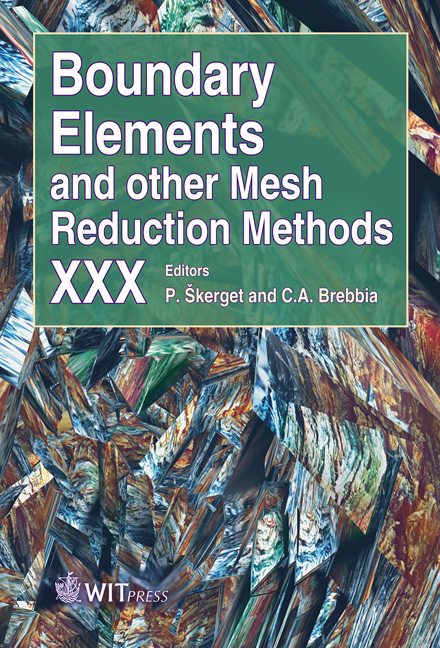Integral Transform Approach For Dynamic Fracture Calculation And Crack Growth Modelling
Price
Free (open access)
Transaction
Volume
47
Pages
10
Page Range
147 - 156
Published
2008
Size
347 kb
Paper DOI
10.2495/BE080151
Copyright
WIT Press
Author(s)
P. Brož
Abstract
The analytical mould of the solution in the radial direction permits precision stress intensity factors to be derived in the scaled boundary finite element method, namely, directly from the definition, and consequently no particular crack-tip interpretation such as refining the crack-tip mesh or employing singular elements, is indispensable. Besides, anisotropic material characteristics can be treated effortlessly. In this analysis, the Frobenius approach in the frequency domain to the solution of the governing differential equations of the SBFEM is used to simulate variable dynamic fracture problems. The complex frequencyresponse functions are calculated. Thereafter, the dynamic stress intensity factors are squarely taken from the response functions out. That is ensued by a fast Fourier transform of the transient load and a later inverse transform to derive the time history of DSIFs. A mixed-mode crack growth simulation was developed. At first, a domain is divided into some subdomains. Since the dimensions and shapes of subdomains can be flexibly changed and only the domain boundaries or common edges between subdomains are discretized in the SBFEM, a remeshing routine such as a straightforward one as in BEMs was set up with minimum mesh variances while the universality and flexibleness of the FEM is preserved. Keywords: crack trajectory, frequency-domain approach, response function, internal damping coefficient, load-displacement relation, mesh density, remeshing routine, subdomain, transient fracture problem.
Keywords
crack trajectory, frequency-domain approach, response function, internal damping coefficient, load-displacement relation, mesh density, remeshing routine, subdomain, transient fracture problem.





